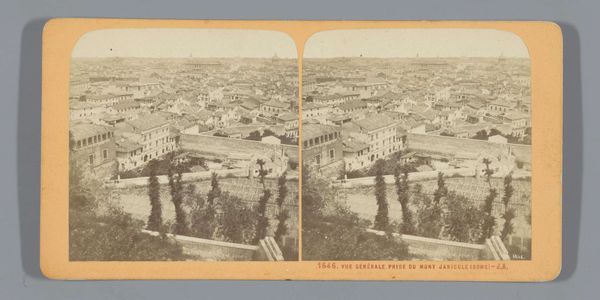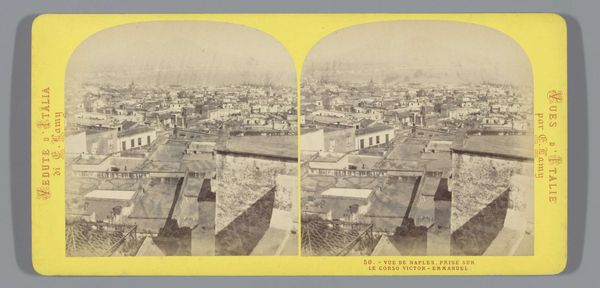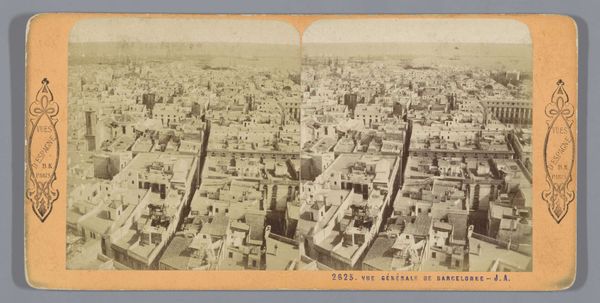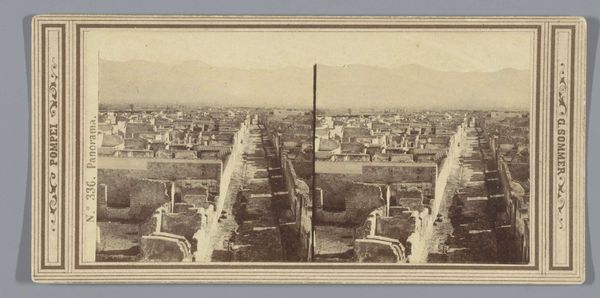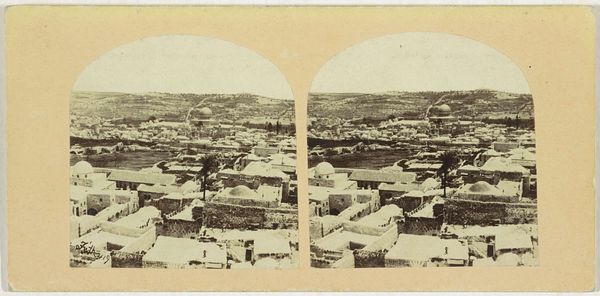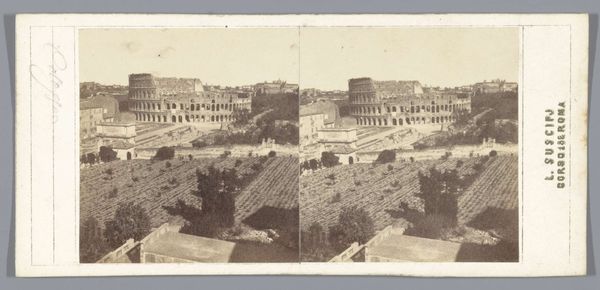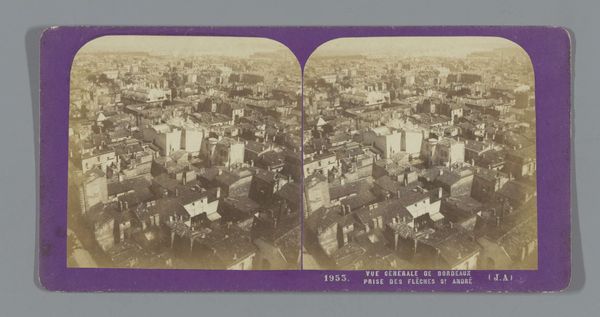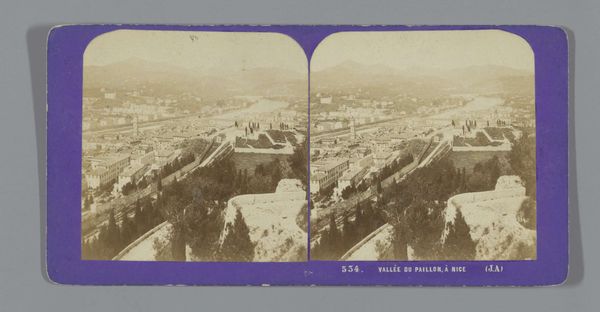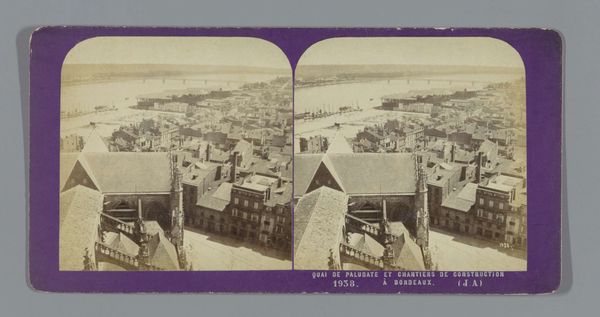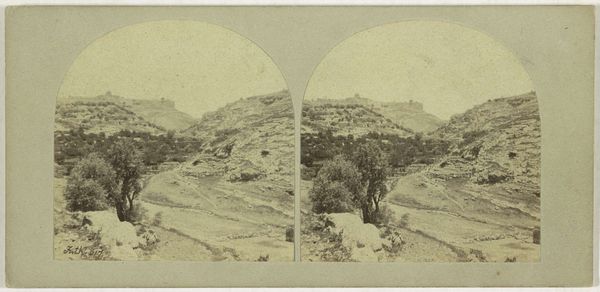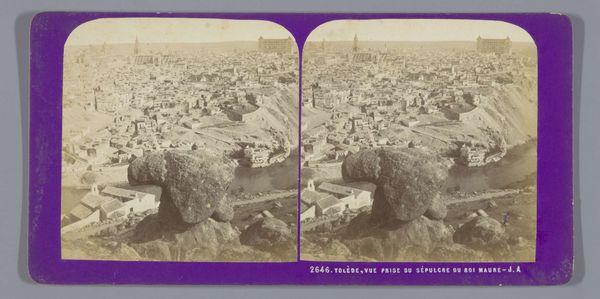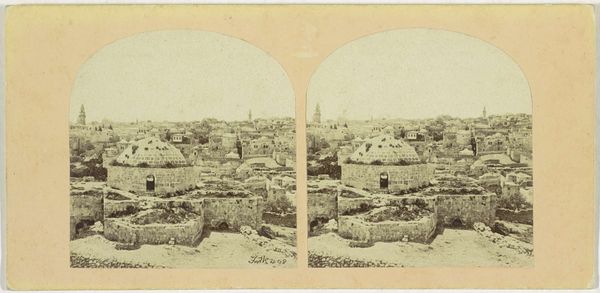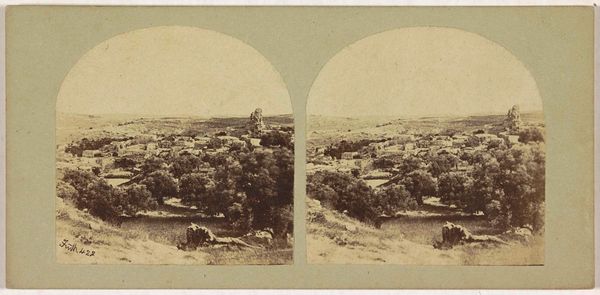
photography, gelatin-silver-print
#
landscape
#
photography
#
coloured pencil
#
ancient-mediterranean
#
gelatin-silver-print
Dimensions: height 87 mm, width 177 mm
Copyright: Rijks Museum: Open Domain
Curator: This is "Ruïnes van Pompeï," or Ruins of Pompeii, a gelatin silver print by Ernest Eléonor Pierre Lamy, created sometime between 1861 and 1878. Editor: My first thought? Melancholy. Seeing these skeletal remains of a city frozen in time evokes a very strong feeling of loss. All those lives… it's humbling. Curator: The stereoscopic format adds another layer, doesn't it? Presenting us with what looks almost like a 3D view into the past. Mass tourism became very popular in that time. People who could afford it traveled to historical places like Pompeii to be a tourist. Lamy could give those who could not afford to do so the experience in the shape of a photography. Editor: It really does deepen the sense of reality, and that deep shadow creates almost theatrical tension. Is it a record, or an imaginative construct of that moment? I’m curious about Lamy's own feelings. Curator: What strikes me is how photography was then employed in the service of archeology. It was both documentary and a tool for dissemination of knowledge. Images like this shaped public perception of Roman antiquity, didn't they? Editor: Absolutely! I can imagine folks gathered in parlors, peering into viewers, suddenly transported to this ghostly city. But think about it, Curator, how selective this "reality" actually is. He focuses on the grand, on the scale, editing out maybe what? The mundanities of everyday ruin life for the archeologists who were based there? The stray animals? Curator: Precisely. There's always a tension between photography as objective documentation and subjective interpretation. Editor: Makes me think about what kind of lives lived in Pompeii. Before the Vesuvius. What did the residents thought about during their lives? Did they worry as much as we do now a days? Curator: Yes, indeed. It invites introspection, reminding us of our fleeting existence against the vast canvas of history. This little card… becomes a meditation. Editor: I agree. History becomes a part of us that lives through time. Let's step back a moment and consider how it changes our perceptions.
Comments
No comments
Be the first to comment and join the conversation on the ultimate creative platform.
